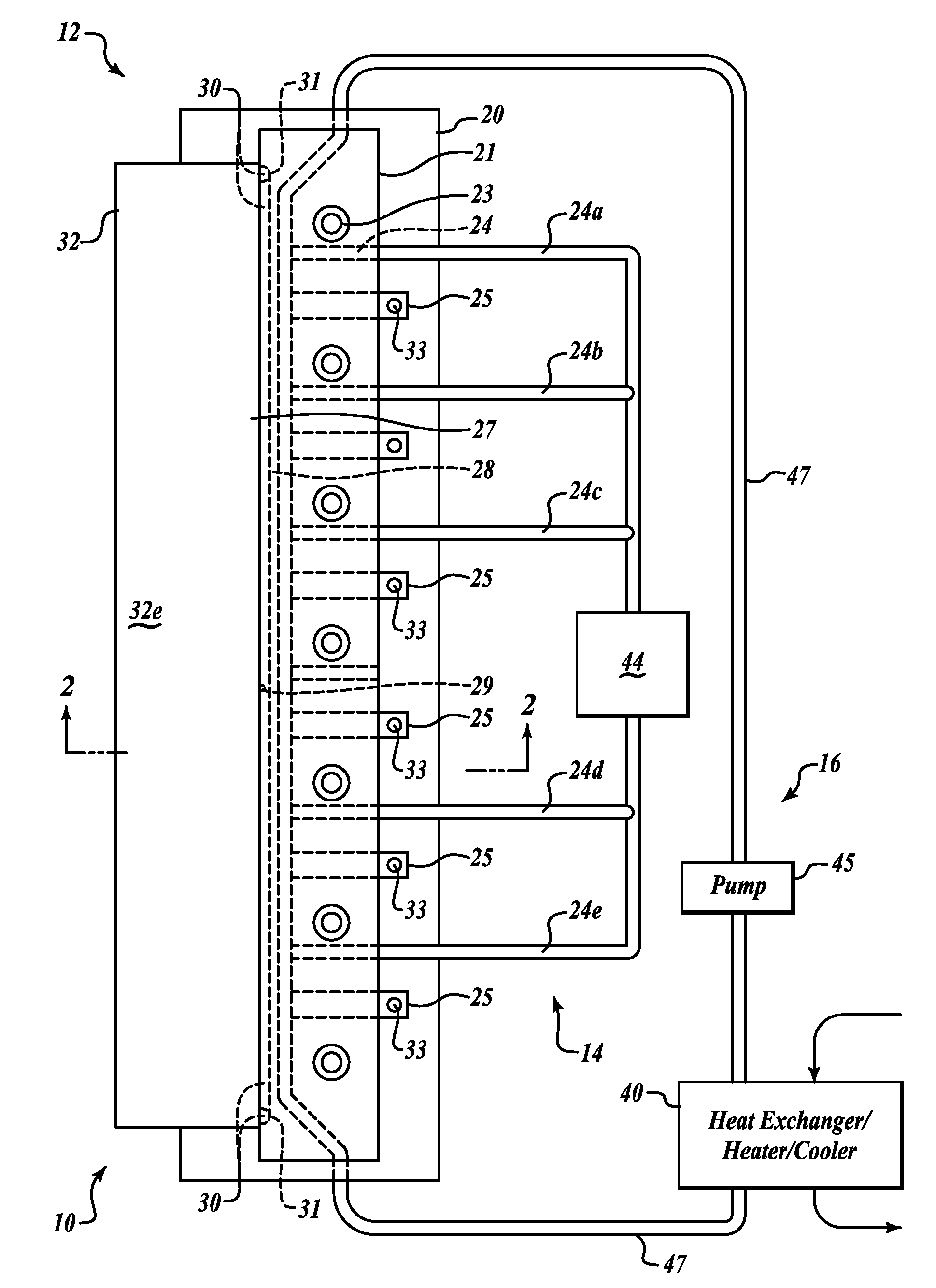Apparatus, Systems and Methods for Work Piece Isothermal Dry Machining and Assembly Fixtures
a technology of isothermal dry machining and apparatus, applied in the field of apparatus, systems and methods for work piece isothermal dry machining and assembly fixtures, can solve the problems of affecting the quality of work piece, the inability to hold rigidly, accurately and inexpensively, and the inability to accurately and accurately predict the type of work piece, etc., to achieve the effect of reducing the cost of assembling, installing and operating the inventive system, and increasing productivity
- Summary
- Abstract
- Description
- Claims
- Application Information
AI Technical Summary
Benefits of technology
Problems solved by technology
Method used
Image
Examples
first embodiment
, Machining Flat and Complex Work Pieces
[0059]FIGS. 1A, 1B and 2 show the inventive work piece holding system apparatus 10 holding an inverted L-shaped work piece 32 in a vertical orientation for machining (milling machine and tooling cutter are not shown). The inventive system includes holding body assembly 12, vacuum / mechanical clamping system 14 and closed loop thermal control system 16.
[0060]The holding body assembly 12 includes base body 20 disposed to rest on and be secured to a movable or stationary bed of a milling machine 71 by bolts 102 with the work piece 32 standing on its leg portion 32a by its dove-tail end 32b. End 32b is retained by dove-tail clamp 25 secured to the base body by bolt 33. The holding body 21 and body extension 22 are matingly aligned one above the other and abut against face 32c of the leg portion 32b. Depending on the configuration of the work piece, the extension may be in multiple pieces, with the body being 20, while both 21 and 22 are extensions....
second embodiment
, Application to Machining and Assembling Aerospace Wing Spars
[0077]In this second embodiment of the invention, as step one (referring to FIGS. 1-4), all the work pieces, including the wing spar chords 50 and the wing webs 52, are consistently machined by the inventive vibration damping, isothermal work piece holding system.
[0078]In FIGS. 5 and 6, an inventive holding system is configured as an isothermal assembly fixture to maintain accurate mechanical alignment of each individual web 52 to spar chords 50a, 50b and the rib posts 51 with flanges 51a, while the temporary fasteners 54 are automatically installed by an automated rivet machine (not shown). Fewer than the usual number of temporary fasteners 54 are tensioned to hold the posts to the web and spars. Note the spar chords 50 a, b and the web 52 are secured by the vacuum channels, and cooled by the thermal cooling system 26, 27 in the upper and lower work piece holding bodies 21U, 21L and the moveable work piece back supports ...
third embodiment
, Application to Manufacture of Aircraft Skin Panels
[0087]By way of background, historically, aircraft wings are assembled by fastening large, flexible, contoured exterior panels (called skins) to stringers by rivets. The whole operation is performed in three distinct stages.[0088]In Stage 1, all the work pieces are manually loaded onto a work fixture, which holds all work pieces in approximate relative alignment, within ±0.030 of an inch on the Y axis and ±0.060 of an inch on the X axis. Assembly workers then manually drill holes to install the first 10-15% of all fasteners for emplacement of temporary fasteners (called tack fasteners) to attach each stringer to the wing skin.[0089]During stage 2, the automated assembly operation begins. An automated rivet machine which utilizes a vision guidance system finds the location of a first tack fastener on the outside of the skin. The rivet machine uses this location as a reference point to adjust the position for drilling holes for the p...
PUM
| Property | Measurement | Unit |
|---|---|---|
| Time | aaaaa | aaaaa |
| Temperature | aaaaa | aaaaa |
| Time | aaaaa | aaaaa |
Abstract
Description
Claims
Application Information
 Login to View More
Login to View More - R&D
- Intellectual Property
- Life Sciences
- Materials
- Tech Scout
- Unparalleled Data Quality
- Higher Quality Content
- 60% Fewer Hallucinations
Browse by: Latest US Patents, China's latest patents, Technical Efficacy Thesaurus, Application Domain, Technology Topic, Popular Technical Reports.
© 2025 PatSnap. All rights reserved.Legal|Privacy policy|Modern Slavery Act Transparency Statement|Sitemap|About US| Contact US: help@patsnap.com



